Currently, IT observability has become an essential element for managing modern infrastructures and applications. However, observability is not limited to simply collecting data: it is based on three fundamental pillars that allow understanding the state and performance of a system in real-time: metrics, logs, and traces.
These three components form what is known as the “IT observability triangle”, where each one plays a specific and complementary role to ensure effective monitoring.
Discover how to implement a complete observability system with our Observability Solutions.
Metrics: The Pulse of the System
Metrics are numerical values that reflect the performance and state of a system at regular intervals. They are essential for detecting trends, anomalies, and behavior patterns in IT infrastructure.
Examples of key metrics:
- CPU, memory, and disk usage on servers.
- Error rates in applications.
- Response latency in APIs and databases.
- Bandwidth consumption in networks.
What are metrics used for in observability?
- Real-time monitoring: They allow detecting whether a system is operating within expected parameters.
- Threshold-based alerts: Automatic notifications can be configured when a metric exceeds a critical level.
- Trend analysis: They facilitate capacity planning and resource optimization.
Implement metric-based monitoring with our Observability Solutions for DevOps.
Logs: The System’s Event History
Logs are detailed records of events generated by applications, servers, and network devices. They contain key information about errors, transactions, and critical events, making them essential for system diagnostics and auditing.
Examples of logs:
- Error messages in applications.
- Access and activity logs in systems.
- Authentication failures or unauthorized access attempts.
- Transactions performed in databases.
Why are logs fundamental in observability?
- Failure detection and debugging: They allow tracing errors in applications and systems.
- Forensic analysis and cybersecurity: They help investigate incidents and ensure regulatory compliance.
- Automating responses: They facilitate integration with incident response tools.
Discover how to manage logs centrally with our Log Consolidation Solutions.
Traces: The Map of Application Behavior
Traces allow visualizing how requests are executed within a distributed system, helping identify bottlenecks and latency issues in microservices and modern architectures.
Examples of traces in action:
- Tracking a request from the frontend to the backend.
- Identifying delays in communication between services.
- Detecting functions or processes generating high latencies.
What do traces bring to IT observability?
- Comprehensive view of data flow: They allow mapping how requests travel across multiple services.
- Performance optimization: They help reduce response times and improve user experience.
- Precise problem diagnosis: They make it easier to locate faults in distributed architectures.
Why do you need complete IT observability?
While each of these components is useful individually, their true power lies in combining all three.
| Component | What does it measure? | How does it help? |
| Metrics | Real-time state and performance | Detect anomalies and optimize resources |
| Logs | System events and history | Diagnose errors and ensure security |
| Traces | Data flow in distributed systems | Identify bottlenecks and optimize processes |
Without an observability strategy encompassing metrics, logs, and traces, businesses risk losing visibility over their infrastructure, increasing response times to incidents, and impacting user experience.
Conclusion
The IT observability triangle provides a holistic approach to monitor, analyze, and optimize technological environments.
- Metrics → Indicate what’s happening in the system.
- Logs → Explain why problems occur.
- Traces → Show how requests travel through the system.
With our Observability Solutions, you can implement a comprehensive approach that reduces response times, optimizes performance, and ensures the stability of your IT infrastructure. 🚀




